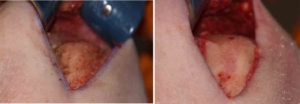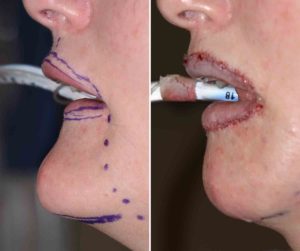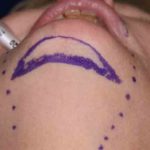Background: While chin augmentation is a very common aesthetic facial reshaping procedure, reduction of a prominent chin is not. Not only are the patient requests for macrogenia reduction far fewer, but the techniques to do so have completely different considerations. In chin implant augmentation the issue is whether there is enough soft tissue to accomodate the amount of augmentation needed. In chin reduction surgery the questions are whether enough bone can be reduced and what happens to the overlying soft tissue in doing so.
Historically, and to some degree today, chin reduction is viewed as the reverse of a sliding genioplasty. If the bone can be cut and moved forward for increased projection it should similarly be cut and moved back for lessening chin projection. But in reducing a chin prominence there is always the issue of managing the ‘extra’ soft tissue which is a non-consideration in the expansile effects of chin augmentation. In reality a sliding genioplasty is a poor method for horizontal chin reduction in most cases as it results in a bulge of soft tissue below the chin as that is where the excess soft tissue ends up pushed back by the bone..
Similarly in an intraorral chin reduction burring technique, there is always the risk of the soft tissue redundancy (and the loosen soft tissue attachments) falling off the end f the bone, creating chin ptosis.
Case Study: This 60 year-old female had been bothered by her prominence chin for many years. She felt it stuck out too far horizontally and she sought a maximal chin reduction effect.


The combination of bone and soft tissue reduction creates the greatest amount of chin reduction that is possible. Only the submental chin reduction technique treats all components of significant horizontal macrogenia.
Highlights:
1) Macrogenia or chin hyperplasia always affects both bone and soft varying degrees.
2) The submental chin reduction technique is best for when significant chin reduction is needed.
3) Burring reduction of the bony chin from below allows for a lot more bone reduction than can be achieved from any intraoral approach.
Dr. Barry Eppley
Indianapolis, Indiana




